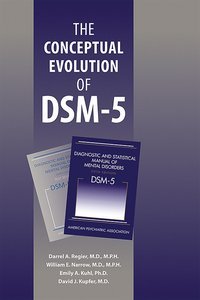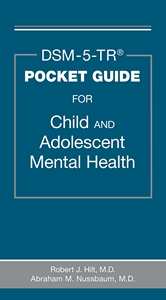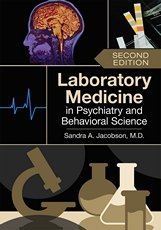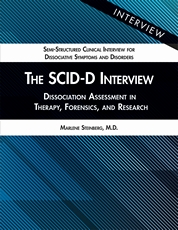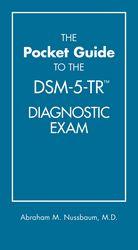The Conceptual Evolution of DSM-5
View Pricing
Description
There is a need to refine our current psychiatric nosology to produce diagnostic criteria and disorder categories that keep pace with advances in neuroscience while at the same time enhance clinical utility. Furthermore, dimensional aspects of psychiatric disorders require greater recognition so as to improve our understanding of boundaries between disorders and underscore the heterogeneous nature of psychopathology. The Conceptual Evolution of DSM-5 provides a framework for the evolution of the forthcoming diagnostic system in the fifth edition of Diagnostic and Statistical Manual of Mental Disorders (DSM-5), which will help advance clinical practice and facilitate ongoing development of diagnostic criteria. This manual:
- Highlights recent progress in our understanding of cross-cutting factors relevant to psychiatric diagnosis and symptom presentation
- Includes detailed discussions on the role of factors such as age, gender, culture, and disability in the expression of mental disorders
- Provides a review of genetic evidence supporting a cross-cutting approach to nosology
- Offers suggestions for integrating cross-cutting factors with DSM-5.
The Conceptual Evolution of DSM-5 was written to impart a theoretical context for understanding potential revisions to DSM-5. The authors reevaluate the structure of the current manual and discuss cross-cutting approaches to facilitate clinical practice and refine research approaches that will guide clinical trials, genetics, imaging, and treatment guidelines. The authors provide the following insights:
- Detailed descriptions of age-, gender-, and culture-specific aspects relevant to psychiatric diagnosis and the need for sensitivity to these factors when making diagnoses
- Discussions on the dimensional aspects of mental disorders, including overlapping symptoms relevant to many or most diagnoses
- Consideration of alternative classifications of disorders that recognize disorders sharing validating features
- Presentation of neuroscientific and epidemiologic evidence to expand understanding of disorders beyond that of the categorical organization presented in DSM-IV
- A review of clinical implications, including how clinicians may shift their conceptualization of previously reified diagnostic criteria and their consequences.
As presented to the 99th Annual Meeting of the American Psychopathological Association, The Conceptual Evolution of DSM-5 explores the rapidly changing research base for the understanding of neurodevelopmental, neurocognitive, addictive, and other psychiatric disorders. The contributions in this volume confirm that DSM-5 is intended to be a living document that can accommodate revisions to specific diagnostic areas based on new evidence that is replicable and subject to review. This efficient updating process will help researchers and clinicians keep abreast of the latest protocols for the research, diagnosis, and treatment of mental illness.
Contents
- Contributors
- Introduction
- PART I: Diagnostic Spectra: Assessing the Validity of Disorder Groupings
- Chapter 1. Diagnosis of Mental Disorders in Light of Modern Genetics
- Chapter 2. Integration of Dimensional Spectra for Depression and Anxiety Into Categorical Diagnoses for General Medical Practice
- Chapter 3. One Way Forward for Psychiatric Nomenclature: The Example of the Spectrum Project Approach
- Chapter 4. Meta Effects of Classifying Mental Disorders
- PART II: Integrating Dimensional Concepts Into a Categorical System
- Chapter 5. A Proposal for Incorporating Clinically Relevant Dimensions Into DSM-5
- Chapter 6. Empirically Derived Personality Disorder Prototypes: Bridging Dimensions and Categories in DSM-5
- Chapter 7. Options and Dilemmas of Dimensional Measures for DSM-5: Which Types of Measures Fare Best in Predicting Course and Outcome?
- PART III: Assessing Functional Impairment for Clinical Significance and Disability
- Chapter 8. Clinical Significance and Disorder Thresholds in DSM-5: The Role of Disability and Distress
- Chapter 9. Assessing Activity Limitations and Disability Among Adults
- Chapter 10. Measuring Disability Across Physical, Mental, and Cognitive Disorders
- PART IV: Identifying Important Culture- and Gender- Related Expressions of Disorders
- Chapter 11. Assessing Mental Disorders and Service Use Across Countries: The WHO World Mental Health Survey Initiative
- Chapter 12. The Intersection of Race, Ethnicity, Immigration, and Cultural Influences on the Nature and Distribution of Mental Disorders: An Examination of Major Depression
- Chapter 13. Gender and Gender-Related Issues in DSM-5
- PART V: Incorporating Developmental Variations of Disorder Expression Across the Lifespan
- Chapter 14. Increasing the Developmental Focus in DSM-5: Broad Issues and Specific Potential Applications in Anxiety
- Chapter 15. Diagnostic Issues Relating to Lifespan From Adulthood Into Later Life
- Index
Contributors
- Juri Allik, Ph.D.
Michael Ashton, Ph.D.
Carl C. Bell, M.D.
Lee Anna Clark, Ph.D.
C. Robert Cloninger, M.D.
Paul Costa Jr., Ph.D.
Barbara De Clercq, Ph.D.
Filip De Fruyt, Ph.D.
Yueqin Huang, M.D., M.P.H., Ph.D.
Robert F. Krueger, Ph.D.
W. John Livesley, M.D., Ph.D.
Juan J. Lopez-Ibor, M.D.
Peter McGuffin, M.D., Ph.D.
Ivan Mervielde, Ph.D.
John M. Oldham, M.D.
Joel Paris, M.D.
Charles B. Pull, M.D., Ph.D.
M. Tracie Shea, Ph.D.
Rebecca L. Shiner, Ph.D.
Erik Simonsen, M.D.
Paul J. Sirovatka, M.S.
Siu Wa Tang, M.B., Ph.D., F.R.C.P.(C.)
Timothy J. Trull, Ph.D.
Peter Tyrer, M.D.
Karla Van Leeuwen, Ph.D.
Roel Verheul, Ph.D.
David Watson, Ph.D.
Drew Westen, Ph.D.
Thomas A. Widiger, Ph.D.
Theresa Wilberg, M.D., Ph.D.
About the Authors
Darrel A. Regier, M.D., M.P.H., is Executive Director of the American Psychiatric Institute for Research and Education and Director of the Division of Research at the American Psychiatric Association in Arlington, Virginia, and Vice-Chair of the DSM-5 Task Force.
William E. Narrow, M.D., M.P.H., is Associate Director of the Division of Research at the American Psychiatric Association and the American Psychiatric Institute for Research and Education in Arlington, Virginia, and Research Director of the DSM-5 Task Force.
Emily A. Kuhl, Ph.D., is a science writer in the Division of Research at the American Psychiatric Association in Arlington, Virginia.
David J. Kupfer, M.D., is Thomas Detre Professor in the Department of Psychiatry at the University of Pittsburgh and Western Psychiatric Institute & Clinic in Pittsburgh, Pennsylvania, and Chair of the DSM-5 Task Force.
Related Products
Carousel Control - items will scroll by tabbing through them, otherwise arrows can be used to scroll one item at a time
